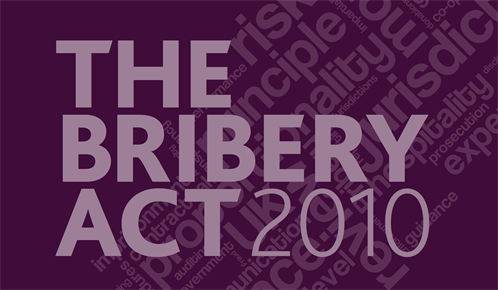The Bribery Act
An overview of the importance of the Bribery Act of 2010 for public relations.
The backhanding background
When the stakes are high and honesty puts you out of the game, it is no wonder that temptation and pragmatism can combine to erode the high standards by which UK business has traditionally been done.
The playing field is hopefully being leveled by international agreement, led by initiatives of the United Nations, the USA and the OECD. The UK, for its part, passed the Bribery Act 2010.
Why, when, in the hundred years prior to 2010, there has been just one prosecution in the UK over foreign corruption, which failed, is new legislation needed? The answer appears to be: to send a message near and far that corrupt practices will not be tolerated under any circumstances, and in any jurisdiction. If the supply side is effectively discouraged, and matched throughout the world, the aim is to frustrate the demand side: the hands held out asking for payment for favours or access. It’s a big ambition, and few would expect the end of baksheesh in Egypt, for example.
Even so, it would be foolish to suppose that British organisations would never, now or in future, find themselves greasing a palm or otherwise lubricating the progress of an important piece of business where such inducements were expected.
A new onus on businesses
The Bribery Act of 2010 introduced various new offences to the statute books. As of the second half of 2011, it has therefore been a criminal offence to bribe another person, to accept a bribe, to bribe a foreign official and, in select circumstances (and importantly for organisations as opposed to individuals), to fail to prevent bribery.
What is not contemplated is any serious scrutiny of corporate hospitality on a modest scale, as a normal activity intended to promote good relations and better understanding with suppliers and clients. The test is intention. However, there are notable reasons to be cautious. What is done on behalf of an organisation by an ‘associated person’, e.g. a contractor, a consultant, an agent, a representative, or any other intermediary preserves any liability.
Crucially, adequate procedures need to be in place to prevent bribery – showing top level commitment, a zero tolerance approach, assessment of the risk, due diligence on associates, defined limits on the value of gifts and hospitality, records of what is accepted or rejected, internal whistle blowing procedures, communication and training in the policy, the procedures to be monitored, reviewed and evaluated, and diligent accounting.
It is an onerous new responsibility
A new threat to reputation!
At worst there is the prospect of a ten year jail term or an unlimited fine for individuals, and such a fine for their companies. There is a defense of duress, where loss of life, limb or liberty are at stake. And there are aggravating circumstances.
But in one very important sense, the damage to a business can be very much greater than the legal repercussions of not abiding by the Bribery Act – and this is the damage to reputation.
Any investigation into corruption will become very public very quickly. It will be highly disruptive, as all connections with clients and suppliers will be checked exhaustively. Relationships between an organisation and its whole network cannot survive intact where the clients and suppliers are contacted or perhaps descended upon by the authorities and all communications examined.
So, a policy is an absolute requirement. It will need to be prepared or checked by lawyers for compliance. But beyond that, it should be contributed to and reviewed by external public relations professionals who specialise in acute issue and crisis management, regulatory affairs, and government relations.
This is where Chelgate comes in. Our work is about managing reputations and relationships. One of our specialisms is the capacity to contain crises and manage acute issues, which is why 24/7 access to Chelgate is exclusively written into the management liability policies of three of the UK’s major added-value insurers.
Back